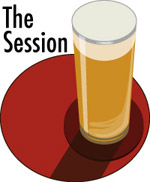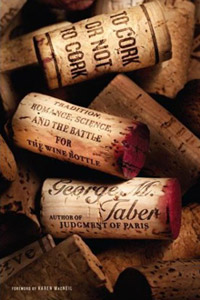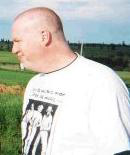 Welcome to The Session #10, hosted this month by Ted at Barley Vine. The theme “Let it snow, let it snow, Winter Seasonal Beers” does not leave us wanting for choices.
Welcome to The Session #10, hosted this month by Ted at Barley Vine. The theme “Let it snow, let it snow, Winter Seasonal Beers” does not leave us wanting for choices.
Lest there be any doubt: Don Russell offered a combined history lesson/shopping list last week, a Baltimore Sun panel tasted a whopping 52 winter beers, and you’ll find many more lists on the Internet (here, here and here – for starters).
Clearly there isn’t enough time to drink all the beers, and we should accept that it is a good thing so many are local and will be drunk not far from where they were brewed. But I do sort of miss the days when it was sport just to find enough “Christmas beers” to keep us interested through the season.
The choice for today isn’t the winter beer we’ll drink most of — that would be Sierra Nevada Celebration — nor is it one that is so hard to find or expensive, say De Ranke Père Noël, that we’ll likely have just one during the season. Great Divide Hibernation is a favorite and a regular, one we associate with full winter season because for several years we had to wait until January and a trip to Colorado to play in the snow before we could find it.
 Only in the last couple of years has been Hibernation been available in New Mexico, although other Great Divide beers have been around since we moved here in 1998. But there still wasn’t a year we failed to track some down.
Only in the last couple of years has been Hibernation been available in New Mexico, although other Great Divide beers have been around since we moved here in 1998. But there still wasn’t a year we failed to track some down.
It’s arrival in New Mexico pretty much coincided with the attention afforded beers such as Titan IPA, Hercules Double IPA and Oak Aged Yeti Imperial Stout. A little “beer cred” never hurts.
At 8% abv, Hibernation is no small beer. It’s won awards as a Strong Ale/English-Style Old Ale and is described at the beer rating sites as an American Strong Ale. I think calling it a Winter Warmer and spending zero time fretting about style suits it fine.
It’s equally enjoyable when it first becomes available (Great Divide brews it in July but doesn’t release the first batch until November) or after a year in our “cellar” (no bottle has made it to two years). My first thought is always the same: “How is this different than last year? It is, I think, but that was a year ago, and I’m not going to worry about it.”
Despite its heft, Hibernation is brewed with the same sensibility — call it continental restraint, or appreciation of balance — I find in all the Great Divide beers, even the ones coveted by those chasing “extreme beers.”
It’s at its best in a small tulip glass or snifter, because it’s a beer to linger over and new aromas will emerge as it warms. Lots of chocolate and spice early, with roasty character (both nuts and hints of coffee beans) on the nose and in the mouth. Caramel and dark fruits, also, their sweetness are nicely balanced by an earthy/husky mouthfeel.
Ted promised extra credit for a food pairing or recipe. Quite honestly, we like this beer on its own, maybe with a fire. But after active day in the snow (and at altitude) Hibernation and a plate of cheese (be sure to have a nutty gouda in there) make a dang fine dinner.
A good night’s sleep is guaranteed.
 For more about what this is part of
For more about what this is part of 
 For more about what this is part of
For more about what this is part of